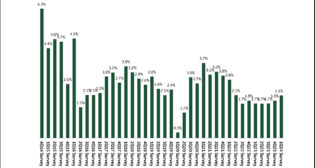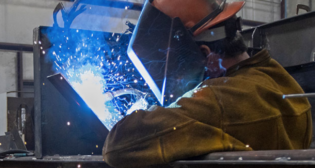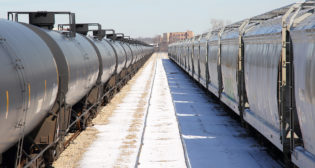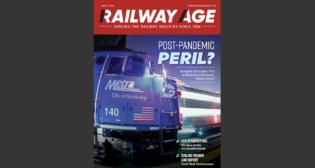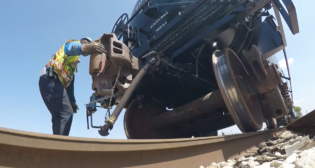
Rail Equipment Finance 2023 Key Takeaways
Written by David Nahass, Financial Editor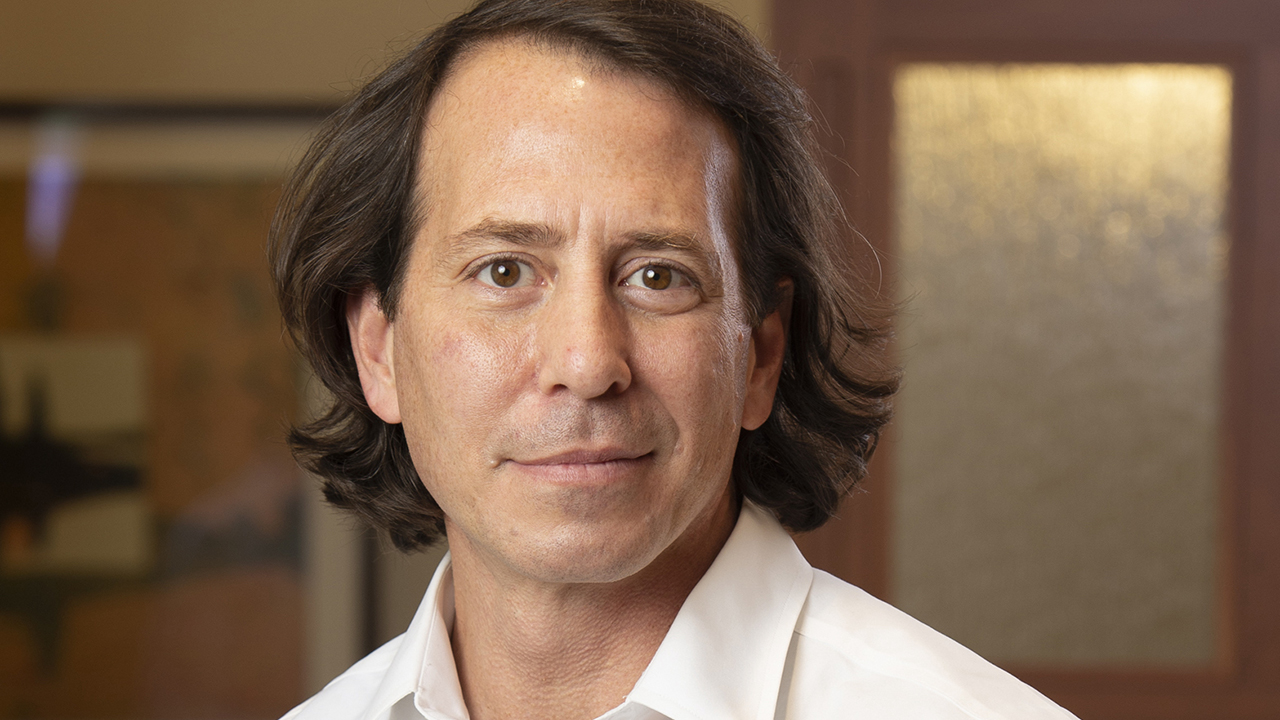
David Nahass, Railway Age Financial Editor
FINANCIAL EDGE, RAILWAY AGE APRIL 2023 ISSUE: In its 37th iteration, Tony Kruglinski’s Rail Equipment Finance Conference (REF) once again took place at the oasis in the desert: The LaQuinta Resort and Club in LaQuinta, Calif. Held in the shadow of the East Palestine derailment but before the calamity associated with the Silicon Valley Bank disaster, REF 2023 was in full force with more than 400 conference attendees. Following is a summary of what was discussed at this year’s REF, with key takeaways (KT).
Jose Maria Liberti, Clinical Professor of Finance, Northwestern University Kellogg School of Management, discussed the M&A market for rail. Transportation is an early M&A market mover before interest rates start to rise. As a result, industrial investors manage margin compression through tightening economic cycles, and buy back shares when M&A is unavailable. KT: From 2009 through 2021, Union Pacific returned 763% vs. 214% for the S&P TMI.
The national fleet average age is 20.1 years and steady; 20.1 years equals 40% of railcar interchange life.
David Humphrey, from Railinc, covered changes in the national freight car fleet. Year-over-year national fleet increases were less than 1%. The largest increases were mill and coil gondola railcars and boxcars. KT: The national fleet average age is 20.1 years and steady; 20.1 years equals 40% of railcar interchange life.
Robert Pickel, from National Steel Car, noted a volatile delivery cycle with deliveries in a narrow range near the annual railcar attrition rate. KT: Expect 42-45,000 cars built in 2023, impacted by component supply and labor challenges.
Eric Starks, from FTR Transportation Intelligence, noted a discordant U.S. economy with increasing GDP, low credit card delinquencies, high cash reserves, 6.3% CPI year-over-year, and an inflationary service economy. KT: While new railcar orders are holding steady, expect lower railcar utilization resulting from lower freight demand.
Graham Brisben, from PLG Consulting, noted decreases in crude and refined fuel loadings while chemical loadings are a bright spot. Downstream products (chemicals, ethanol and NGLs) cannot replace loadings lost from coal declines. KT: Rail needs to move minerals for battery production to support EV growth. The Inflation Reduction Act (IRA) will shift U.S. energy consumption in the next eight years.
Edward Murphy, from Standard & Poor’s, noted a potential recession and showed decreasing railroad ORs while service has declined. KT: Post-recession, S&P is watching increasing truck driver shortages, supply chain emissions reductions and post-pandemic nearshoring.
Stefan Loeb, from Watco (now with NS), discussed how short lines increase North American carload business. Worsening North American systemwide service, limited 2022 short line carloads, with many loads lost to trucks. KT: PE investment in short line railroads indicates growth and opportunity and will drive profits.
Daniel Anderson, from TrinityRail, noted a 20% age gap between the tank railcar fleet and the national fleet resulting from acceleration of younger tank railcar attrition, a changing commodity mix and de-emphasization of crude oil from 2019. KT: The IRA and EVs can decrease rail-based fuel loads. Renewable fuel investments may offset this.
Public/private partnerships are necessary for the required pivot moving rail to the next business cycle.
Adriene Bailey, from Oliver Wyman, discussed North American rail’s need to increase market share through service improvements (think better than 2018 and 2019). Executives and regulators need a better vision to generate successful long-term growth. Rail needs to convince its investors that growth is the only future. KT: Public/private partnerships are necessary for the required pivot moving rail to the next business cycle.
Ron Sucik, from RSE Consulting, discussed the historic shift of 50% of 4Q22 container imports (boxes) from the West to East Coasts. This helped end the West Coast container ship jam. Nearshoring could reduce Asia-originated shipments 20% by 2025. 2023 intermodal growth looks tepid, with the highest unused vessel capacity since after the pandemic’s start. KT: The projected 2H2023 rebound has headwinds; Gulf and Eastern container moves negatively impact intermodal loads.
Jeff Blake, from The David J Joseph Company, discussed steel market trends leading to more domestically sourced steel to reduce China’s steel market dominance. 20 million nominal tons of projected capacity from new electric arc furnaces is commencing in 2023, increasing U.S. demand for scrap steel. KT: China may become a net exporter of scrap by 2025.
John Ward, from the National Coal Transportation Association, noted that longer cycle times (from delays or crew unavailability) negatively impacted 2022 coal volumes, that Wyoming coal mining companies lost $100 million revenue, and negative consequences from railroad coal car caps all resulted from rail service-related problems. Coal-generated power replacement continues to be challenged as supply chain disruptions impact renewable buildouts. KT: 62,000 MW of coal-fired generation are due for retirement from 2023-2028.
Ross Corthell, from Packaging Corporation of America, David Horwitz, from GATX Corporation, and Adam Simeon, from Union Pacific, talked boxcars. The UP boxcar fleet increased 18% from 2020 and is 7% newer than the fleet; 35% of the boxcar fleet reaches regulatory obsolescence between 2022 and 2030. Larger-capacity cars could mean that the replacement cycle requires fewer new cars. The boxcar manufacturing backlog is into 2024, with 11,925 projected deliveries from 2023 to 2027. Boxcar replacement investor economics remain challenging. Growth-oriented shippers may struggle aligning car capacity to product and legacy facility loading requirements. Boxcar pricing has doubled since the early 2000s. KT: In 2022, the national boxcar fleet grew by more than 1,000 cars for the first time in 15 years. Boxcar fleet tonnage capacity is higher than in 2016 (most recent peak capacity). However, from 2008 to 2027 (projected), the total fleet will be reduced by 39%.
Edward Biggs, from Biggs Appraisal, Sean Hankinson, from AITX Rail, Pat Mazzanti, from Railroad Appraisal Associates, and Greg Schmid, from Residco, led the railcar valuation panel. Estimated FMVs have increased or stayed level from 2022 values except for coal cars (surprising considering recent strength in that market) and 30,000-gallon non-coiled, non-insulated “ethanol” tank railcars (more limited use after May 1, 2023). KT: In a strong lease market for railcars, survey participants rated industry health seven out of ten.
Paul Titterton, from GATX Corporation, discussed GATX’s long, successful history in railcar leasing. GATX has maintained a core focus on safety, employee longevity, financial stability and consistent business plans. Keeping the customer at the center of business is a core corporate value. KT: With 125 years of experience, even as business fundamentals stay consistent, GATX knows that railcar leasing’s subtleties and nuances are always changing.
The U.S. DOT estimates U.S. freight movements will increase 30% by 2040, from 19.3 billion tons to 25.1 billion tons.
Anthony Hatch, from ABH Consulting, began REF’s day two discussing potential impacts of the East Palestine derailment. He discussed the need for improved service and growth to placate hungry investors, highlighting current labor market challenges and impacts. Short line railroad sales are expected to continue in 2023. KT: The U.S. DOT estimates U.S. freight movements will increase 30% by 2040, from 19.3 billion tons to 25.1 billion tons.
Perennial REF favorite Sergio Rebelo, MUFG Bank Distinguished Professor of International Finance, Northwestern University Kellogg School of Management, gave a U.S. economy update. Declining birth rates and an aging workforce continue to stress the U.S. labor pool. On the supply side, prices on electronic components (e.g., semiconductors) remain off-trend high even after reduced freight costs. Rebelo discussed inflation and the Federal Reserve’s potential to overshoot (under-deliver) its inflation targets while striking a balance for the economy. KT: World trade as a percentage of GDP is projected to decrease. Rare earth mine production (commodities necessary for batteries) favors China and Asia vs. the U.S. and Europe.
Ross Corthell, from Packing Corporation of America, Roger Jimenez, from Tokai Carbon, and Eric Monger, from KBX Rail, discussed the shipper point of view on rail freight and railcars. All parties felt that the time for excuses related to why service continues to be so poor has passed and needs to be replaced by action from the railroads to improve service. Technology is something that is on the shippers’ minds, both as it relates to railroad service and to providing assistance in handling a difficult hiring environment. KT: Panelists felt that car supply issues could not be effectively addressed until rail service normalizes.
Patrick Kurtz, from AITX Rail, discussed the covered hopper railcar market. In the grain market, the fleet has an 8% capacity slack, with most large-capacity cars in full utilization. There is greater slack in plastic pellet hoppers. Small-cube hoppers are experiencing a “dead cat bounce.” KT: A 26% reduction in 4,000- to 5,000-cubic-foot covered hoppers offset by jumbo car growth means more cubic capacity from smaller car count increases.
David Humphrey, of Railinc, led Wednesday’s “Power-Power-Power” sessions covering the locomotive fleet. The locomotive fleet average and median age increased, due to decreased new builds. KT: The percentage of new and rebuilt units per year added/adjusted in Umler has remained fairly constant over six years.
In discussing the alternative fuel transition, the railroads will need a cohesive strategy not based primarily around biodiesel.
Mike Cory, from CFG Consulting Inc., and Don Graab, from Triangle Brothers and Associates, discussed locomotive use in North America. The lack of growth in loadings is partly responsible for the weak new-locomotive demand cycle, perpetuating the rebuild cycle. Questions were raised about timing for implementing scalable hydrogen as an alternative fuel. KT: In discussing the alternative fuel transition, the railroads will need a cohesive strategy not based primarily around biodiesel.
Glen Rees, from Cummins Inc., discussed the push to zero emissions from the perspective of an engine manufacturer. Cummins is leading the move to zero emissions with investment in the broadest spectrum of alternative fuel options: battery, fuel cell, and its fuel-agnostic engine. KT: “Intermediate action can be taken to reduce emissions in the short term, which affords time for technology … to meet the goal of carbon-free by 2050.”
Robert Bremmer, from Wabtec, discussed the market for new locomotive products with emphasis on the current FLXdrive locomotive and a future with hydrogen powered locomotives. Bremmer emphasized the rebuild market and its technical improvements. Wabtec has a roadmap for the future of locomotive technology leading into 2030 and beyond and sees opportunity for real and significant CO2 reductions. KT: Right now, several solutions exist to lead North American rail to an attractive and environmentally sound alternative-fuel future.
Stuart Biggs, from Biggs Appraisal, discussed the changes in the locomotive fleet consistency that show a significant decrease in SD60 and SD70 locomotives in operation year-over-year. KT: There were approximately 450 rebuilds performed in 2022 by Wabtec and Progress Rail/EMD.
Pedro Santos, from CNGmotive Inc., provided an update on alternative locomotive fuel strategies. Generally, there are limited options for North American rail to achieve carbon-neutral and carbon-free locomotive fueling: hydrogen, renewable natural gas and eMethane. Santos discussed the challenges of using liquified vs. compressed hydrogen. KT: Liquid hydrogen is 20 degrees F above absolute zero (–460 degrees F). If there was a liquified hydrogen spill, the commodity discharge would actually liquify the air!
Jason Kuehn, from Oliver Wyman, focused on North American rail’s challenges in contemplating the alternative fuel switch. With SAF and renewable diesel competing for the same feedstock and an estimated gap of 1.7 billion gallons of more demand than there is of potential supply through 2030, the 2025 goal of net-zero emissions seems distant. Harnessing the regenerative braking power of locomotives could provide a much-needed improvement to the emissions puzzle. KT: The largest new-locomotive builder in North America is Siemens Mobility, albeit all its units are for passenger service.
Pat Mazzanti, from Railroad Appraisal Associates, Rick Ortyl, from Metro East, and Greg Schmid, from Residco, discussed locomotive valuation. Generally, the locomotive market is softer than in 2022. The demand cycle, concerns about the alternative-fuel transition and the worry that certain models lack longevity weighs on the marketplace. KT: On some newer units, secondary market sales are adding valuation clarity.
Great speakers! Great content! Thanks to all the speakers and attendees.
Got questions? Set them free at [email protected].
